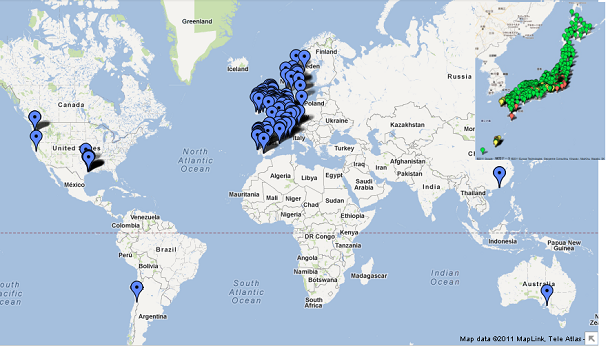edatoakrun said:
IMO, there are multiple causes for the bungled DC charger roll-out in the USA.
All are related to what I think is the unaccepted reality today, that will be obvious, in retrospect.
A network of DC stations for fast charging BEVs will be the essential infrastructure that will allow America to replace the ICEV as the majority of the nations private vehicle fleet, and far sooner than is commonly expected.
I didn't believe this 5 years ago (I thought battery swap was the most likely BEV solution) and some on this forum a year ago were still saying DC, was not required, either because frequent DC use would “damage” the battery, or that one minute of DC charging for two to four miles of driving, was not fast enough.
The BEV/DC reality, that it’s here NOW, economically viable, and will soon be DEMANDED by all BEV drivers, has clearly not sunk in at most American EV manufactures, who are planning to try to sell less capable L2/AC only EVs.
DC superiority also has not seemed to have sunk in at the bureaucratic level in many States. If you look at where DC is being installed in the USA, it seems to either where a competent State bureaucracy “gets it”, such as Washington and Oregon, or where electricity retailers are allowed to pursue BEV customers in a largely free market, such as in Texas.
In California, we seem to be burdened by a PUC, CARB and regulated utilities, that are, by incompetence, blocking BEV adoption, by blocking DC charge infrastructure development, while expending huge amounts of public funding on less useful L2 public charging for EVs, and on what are far less likely, and clearly not presently viable (hydrogen, bio-fuel) energy alternatives.
Well put! I don't believe in these "secret forces" that are out to stifle the EV movement. I think it's just incompetence and the basic human trait of resisting change for no good reason. There is also a lot of really bad "common knowledge" out there that is totally off-base.
I remember when my mom was looking to get a new car back about 5 years ago, and trusting me completely, along with my engineering background, she asked me what I recommended. I didn't hesitate: Toyota Prius. She responded with her Kentucky accent; "That's one of those old electric things, I don't want to mess with those." She totally didn't understand what the Prius was, and had just heard little "common knowledge" tidbits that they had super-expensive batteries that had to be replaced all the time, they were too small, expensive, slow, and extremely hard to operate with all those "computer screens".
With a lot of work on my part, I finally convinced her to take a test drive. Not too long after which she drove home in a new 2008 Prius, and she loved that car like no other car before it!
We have an uphill battle, as Toyota has well over a million on the road now, and yet people still believe all these incorrect things about the Prius. It's even embedded in popular culture now. People are made fun of in movies for owning/driving a Prius!
One of the incorrect assumptions my mom had of the Prius was that it needed to be plugged in. I told her, "You wish it had that feature, but no, it's no different from a normal car. You put gas in, it goes. You just put a LOT less in!". That was the inspiration that made me create my own plug-in-Prius.
I would guess we have about 10k EV's on the road here in the US, and probably about half of them are close to where I live in Berkeley, California. I know that in the US, there are more Prius owners per capita in Berkeley than anywhere else. Still even with this EV's are still not understood correctly by most people!
When you read some of the comments that were posted in
my recent article on Yahoo, it becomes apparent how much of a battle we have ahead of us. There is so much "hate" and misinformation it really is disheartening. I almost wish I could take back that article, as it might have actually harmed our nascent movement more than it helped!
QC infrastructure expansion would greatly help our cause, there's no doubt. But the best chance we have is to show as many people as possible "the light". (How you can have your cake and EV it too, and it's very tasty!) If people really have the correct understanding, we will make it work. We will have our QC infrastructure fast if there are more EVangelists running around spreading the truth. It's a massively uphill battle though!
-Phil


